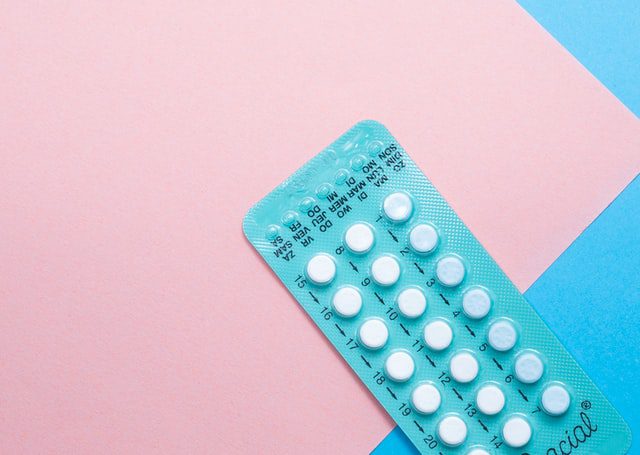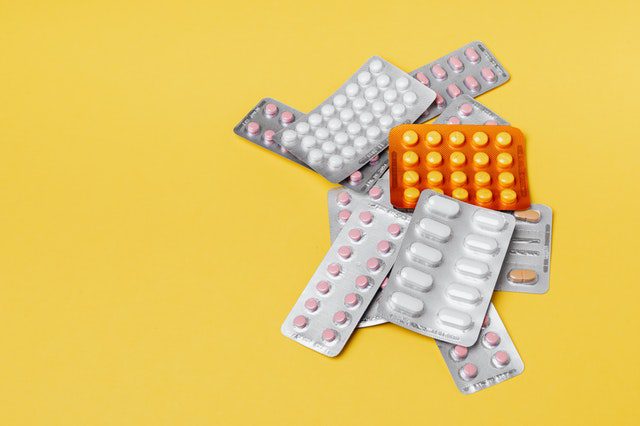
Microdosing Estrogen
Hormone therapy is a highly specialized aspect of transgender health and it is very important that trans women consult a medical professional with expertise in this field. Many centers perform gender confirmation surgery without prescribing gender-affirming hormone therapy.
Hormone therapy can have major implications on the health and well-being of transgender women and as estrogen levels have such a delicate range of optimal efficiency, the input of a hormone specialist can go a long way in avoiding health risks and keeping you satisfied with your gender transition.
Estrogen is synonymous with estradiol, which is one of three female hormones that fall under estrogen. When people take small amounts of a hormone for hormone replacement therapy, it is referred to as “microdosing”.
Some who identify as transfeminine, trans women, gender expansive, and non-binary may wish to alleviate some of the discomfort associated with gender dysphoria by undergoing feminizing hormone therapy.
Following a low-dose estrogen therapy regimen has many advantages. Specialists design hormone therapy regimens with the goal of maintaining equilibrium in hormone levels. For this reason, feminizing hormone therapy is often accompanied by a testosterone blocker, also known as anti-androgens, to keep testosterone levels lower, depending on the desired outcome of the patient.

Why Microdosing Is Beneficial In Hormone Therapy
Hormone replacement therapy impacts an individual’s secondary sex characteristics. In trans women, hormone therapy with estrogen will replace male secondary sex characteristics with feminine traits such as breast development. These changes can be an overwhelming aspect for male to female transsexuals and microdosing estrogen may slow the transition to a more gradual rate.
Hormonal therapy using lower doses rather than higher doses may be beneficial to the following people:
- Transgender women who have concerns about pre-existing medical conditions that might be aggravated by hormone therapy. Some mental health conditions can be greatly impacted by altering hormone levels rapidly and to a great extent. Having an open and honest conversation with mental health providers can shed some light on whether starting or stopping hormone therapy will be most beneficial. Microdosing is undoubtedly the safest route to consider when medical conditions are of concern.
- Microdosing is also a wiser option when economic factors come into play. This way, the duration of hormone therapy is extended, allowing patients to better manage and plan their financial priorities. High doses imply high costs in a short time that can be financially straining for many.
There are many factors to consider when deciding on a dose that is right for you. If certain masculine characteristics are triggering your gender dysphoria, you may want to consider estrogen therapy at higher doses to speed up your medical transitions.
Doctors do, however, recommend at least starting endocrine treatment at lower doses and gradually increasing it. This will maintain transgender health by not pushing hormone levels to unhealthy extremes.
What Does Microdosing Estrogen An testosterone Blockers Mean?
It is typically recommended that transgender women begin their treatment with oral or transdermal estrogen as it is easier to determine the target female range by observing the gradual feminization caused by these routes of estrogen administration. Skin preparations are the safest route of administration for estrogen and oral administration should be avoided if you have a history of venous thrombosis.
Firstly, let’s elaborate on microdoses of estrogen and anti-androgens.
1. Oral Estradiol
Oral estradiol is usually administered sublingually. A typical dose would consist of 2 to 8mg estradiol per day whereas a microdose would insist on a daily dose of 1mg.
2. Transdermal Patch
Patches are a good source of transdermal estrogen. The brand of the patch will determine how often it needs to be changed and patched vary in concentrations. A patch with a low dose of the feminizing hormone will average at 50mcg daily. In contrast, a “normal” dose would range from 100 to 400mcg per day.
3. Estradiol Valerate
Estradiol valerate is usually injected intramuscularly. A microdose would include injecting 20mg fortnightly whereas a high dose would fall between 20 and 40mg every two weeks.
4. Estradiol Cypionate
Estradiol cypionate is also injected intramuscularly and a microdose would be the injection of less than 2mg every two weeks.
Hormone Treatment With Anti-Androgens
1. Spironolactone
Spironolactone is widely known as “spiro” and is the most commonly used anti-androgen today. It is recommended that spiro is taken at mealtimes orally. A microdose of spiro consists of around 25mg daily whereas a “normal ” dose consists of 50 to 200mg twice a day.
2. Finasteride
Microdosing finasteride includes administering around 1mg daily. A “normal” dose would be 5mg daily.
The goal of using anti-androgens as part of your feminizing hormone therapy regimen is to enhance the effects of estrogen on the body by lowering testosterone levels. It stands to reason that testosterone production will greatly interfere with the clinical response of transsexuals receiving treatment. A decrease in testosterone levels may lead to some adverse effects such as low energy levels, hot flashes, and an increase in body fat.
Anti-androgen substances are typically administered in the initial phases of feminizing hormone therapy but may persist throughout the entire duration of the medical transition of many trans women. For some non-binary folks and gender-nonconforming people, treatment with anti-androgens alone gives them their desired outcome. An androgen blocker will decrease testosterone production immensely and for many non-binary people, a feminizing hormone isn’t necessarily needed.
Gender-affirming hormone therapy can smooth the process of realizing your true gender identity. The World Professional Association for Transgender Health has utilized endless resources in elevating the standard and diligence of the gender-affirming care industry.

Estrogen Hormone Therapy Overview
A growing number of the population disregards gender binary and wishes to receive gender-affirming hormones to acquire the physical characteristics of their personal gender identity.
One thing to note about microdosing to achieve gender affirmation is that a lower dose of cross-sex hormones will still bring about the sought-after physical changes associated with feminizing hormone therapy.
Reasons For Undergoing Feminizing Hormone Therapy:
Feminizing hormone therapy isn’t exclusively intended for transgender women, but for anyone experiencing gender dysphoria including non-binary folks and those with a gender identity that differs from the traditional gender binary.
Gender affirming hormones can:
- Improve on the quality of your life
- Alleviate psychological and emotional distress
- Improve social functioning
- Lessen the severity of gender dysphoria
- Increase sexual satisfaction
- Cause body fat redistribution to better suit a feminine figure
When feminizing hormone therapy starts after male puberty has taken place, the transition from male to female is a little more complicated. Transgender women have by then already gained an increase in muscle mass, facial hair, body hair growth, and erectile function.
There are certain risk factors to be wary of when transitioning, but a low dose of estrogen may lessen these factors to a certain extent.
Your doctor might discourage feminizing hormone therapy if the following apply to you:
- If you have severe medical conditions
- If you have a condition that may restrict your ability to give informed and definite consent
- If you are a victim of hormone-sensitive cancer like prostate cancer
- If you have a behavioral health condition that cannot be controlled.
- If you suffer from a thromboembolic disease or any related condition that may alter your blood count of distribution to vital organs
Apart from the above-mentioned risk factors, certain complications might arise during the course of feminizing hormone therapy.
Possible complications include but are not limited to:
- High blood triglyceride levels
- Infertility
- Hyperkalemia as well as hypertension
- A pulmonary embolism or a thrombosis
- Weight gain
- Discharge from the nipples
- Type 2 diabetes
- A high level of prolactin is present in the blood
- Cardiovascular disease
- Stroke
- A higher risk of developing breast cancer in comparison to cisgender males.
These complications may seem severe and, frankly, a little bit scary. Do not have anxiety, however. They are simply potential complications that do not occur with the majority of transgender women. It is for the sake of transparency that they are listed as it is crucial to gain unreserved insight into every aspect of gender-affirming care before making a decision.
Fertility
Before definitively deciding to commence hormone treatment, it is worth considering potential future aspirations concerning your childbearing abilities. The longer you receive gender-affirming hormones, the higher the risk of infertility becomes.
If you might have a desire to have biological children in the future, freezing your sperm is a great way to conserve your dream. Even if you decide to halt feminizing hormone therapy, the testicular function may never fully return to its normal efficiency.
It is also common in transgender women to experience a diminished effect on sexual function and ejaculation. Although there are numerous ways of treating erectile dysfunction with various medications, fertility cannot be increased by these methods.
Preparation
Whether you are microdosing estrogen or administering higher doses of this feminizing hormone, your doctor will complete thorough examinations and evaluations of your health status before initiating hormone therapy.
A doctor will review the medical history of your family as well as you, personally. They will also perform a physical examination which includes a thorough assessment of your external reproductive organs. Lab tests will be performed to examine the levels of your blood lipids, blood sugar, liver enzymes, and electrolyte balance among others. They will also review your immunizations and perform screenings based on your sex and age.
Other personal lifestyle choices are just as important as medical information. An honest discussion regarding drug, alcohol, and tobacco use is necessary.
As part of the in-depth evaluation, a behavioral evaluation will be performed. During this assessment topics like your gender dysphoria and your sexual health concerns will be discussed. You will also have the chance to voice your experiences with your gender identity in social, work, home, and school environments.
This part of your assessment will include a detailed discussion about your goals expectations for feminizing hormone therapy.
During The Treatment
Transgender women typically begin therapy by taking spironolactone with the aim of blocking androgen receptors, thereby decreasing testosterone production. Within two months you will begin administering estrogen and female sex characteristics such as subtle breast growth will begin to emerge.
Analogs of gonadotropin-releasing hormone may be helpful in lowering testosterone levels to the point where a low dose of estrogen is sufficient and spironolactone isn’t even necessary anymore. Micronized progesterone becomes a valid aid to improve breast growth and decrease muscle mass.
Finasteride as well as topical minoxidil is a great option for patients who are prone to develop male pattern baldness and scalp hair loss.
Results
In the first year of your medical transition, three monthly checkups with your doctor are required. During these checkups, your doctor will evaluate physical changes, monitor and adjust your hormone concentrations to the lowest efficient levels, analyze your blood composition, and monitor your mental and behavioral health.
Preventative care is definitely not something you should oversee. Screening for breast cancer as well as prostate cancer has to be a top priority to avoid any serious diseases in the future. Bone density is a frequent problem in older women and this is applicable to trans women as well. Supplementation of calcium and vitamin D can be very beneficial.

Testimonies And Personal Accounts
Marisa Rivas
30-year-old Marisa Rivas started experiencing gender dysphoria as she never felt like she identified with being a woman or a man exclusively. This student decided to start using gender-neutral pronouns and got a mastectomy to better represent her gender identity. Rivas went to visit a clinic to consult a specialist about taking low-dose testosterone to achieve a perfect balance between male and female. Microdosing is an excellent option for non-binary people like Rivas who wish to gain secondary sex characteristics of both male and female nature.
Teen Vogue
An article in Teen Vogue outlines what it means to transition as a non-binary person. It describes transitioning as not always being linear in the sense that its purpose is not to become the opposite gender but rather to find the balance that reflects an individual’s personal sense of self. Many accounts of non-binary transitioning conclude that transitioning is not necessarily a process that will come to an end but will rather change and evolve as a person changes and evolves. It is also emphasized that gender expression differs from gender identity. One person might express a more feminine gender, leading to the assumption that they identify as female when they, in fact, identify as non-binary. These individuals should not have to physically express a defined binary gender in order to legitimize their identity. They simply need to be accepted and respected and granted the freedom to explore all the different aspects of their identity.



